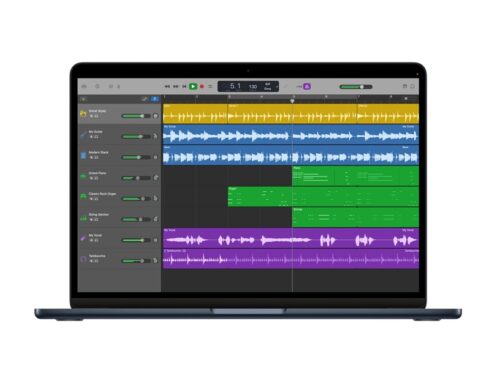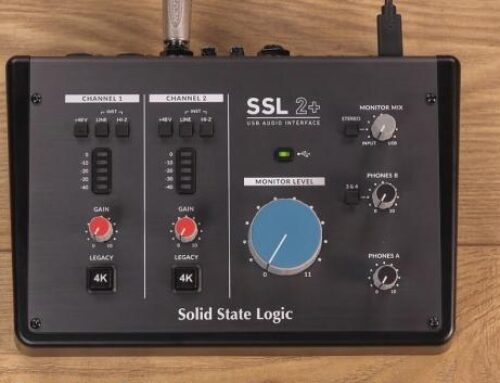Are You Making Any of these 6 mistakes in Vocal Recording?
Recording vocals is arguably easier than recording a drum kit, but there are still common mistakes to avoid when laying down vocal tracks or recording vocal talent. Here’s six things to bear in mind. In many ways, a good vocal sound comes LESS from employing fancy techniques, and MORE from avoiding common problems.
Here are five of the possible mistakes you may be making if you are recording vocals:
- Popping
Even though all mics suitable for vocals have a built-in popscreen (windscreen), this typically is not enough to guarantee freedom from p-pops—technically called “plosives” (those distracting thumps that often happen on the letters “p” and “b”, and are hard to get rid of). In normal speech you don’t even notice it. But on recordings, these air blasts strike the diaphragm of the mic. Creating a punchy low frequency sound known as Popping. To understand it better, try this exercise:
Place your hand in front of your face as you say these two sentences:
Peter Piper picked a peck of pickled peppers.
Better businesses build big boxes.
Feel the air hitting your hand? That’s popping.
To avoid it, the easiest way is to sing into the mic at a slightly off-axis angle, so the blasts don’t strike the diaphragm directly.
However…since many singers can’t or won’t do it, engineers often use pop filters instead.
Here’s how they work:
By creating a barrier between the singer and the mic, pop filters act like a net to catch “plosives“, while allowing other sounds to pass freely.
The barrier also acts as a distance marker, preventing singers from moving in too close, as they often will.
Here are some pop filters you can use:
Nady MPF-6
Stedman Corporation Proscreen XL
Also, by adding a high-pass filter, it’s harder to hear popping.
- Sibilance
Sibilance is a common issue when mixing vocals. Ideally, it would be addressed and reduced in the recording phase when possible. But oftentimes, we’ll need to help control it in the mix.
Attempting to reduce sibilance with EQ however, is a mistake, and one that many novices make.
The OTHER strange thing about the human voice is. When pronouncing “S” and “F” sounds, the mouth emits a high frequency blast of air, commonly known as sibilance. You don’t notice it in daily conversation…
But on recordings, when your mouth is right up against the mic, it often sounds painfully obvious.
Let’s do another demonstration:
Using a condenser mic (which is more prone to sibilance), record yourself saying this line:
She sells sea shells by the sea shore.
Now listen back and pay close attention to the “S” sounds. Hear that annoying hiss? That’s sibilance. To fix this problem, you COULD just mask it with software tools like de-essers and multi-band compressors…But the smarter strategy is to avoid recording it in the first place. Just like with popping, singing at an off-axis angle can USUALLY fix the problem. If not though, here’s something else you can try:
The Pencil Trick.
Grab a pencil, and secure it directly over the diaphragm of your mic with a rubber band, as shown in this picture.
Now…those high frequency blasts will be split in half by the pencil, and diverted off to the side. Problem solved.
Here are some Diaphragm Condenser Mics you can use:
Audio Technica AT2035
AKG C414
Neumann U87
Also, by adding a de-esser, it’s harder to hear and avoid sibilance.
- Proximity Effect
Proximity effect is simple – the closer you get to the microphone, the more bass ends up in your recording (or performance for that matter). Although this may not seem overly significant to beginners, seasoned pros will testify that this law can either make or break your audio track.
Due to the design of the cardioid mics. Which is the standard polar pattern used on vocals. Whenever a sound source is located within a few inches of the diaphragm. The microphone exhibits a noticeable low-end boost in its frequency response. The closer the sound, the stronger the effect. With certain instruments such as acoustic guitar, this can serve as a useful tool in adding warmth.
On vocals however, when inexperienced singers use it unintentionally. It can be extremely annoying to hear that low end boost appear and disappear at random.
If your singer is having this problem, here’s how you fix it:
Use a pop filter – to prevent the singer from getting too close to the mic.
Use omnidirectional mics – which are immune to proximity effect because of their design.
- Poor Room Acoustics
We get it — if you’re recording at home or in any less than ideal environment, then you’re unlikely to have studio-quality acoustics. You’re going to have to compromise, but there’s a limit to what you can ignore without totally trashing your sound.
However, the acoustics in your room is bad, so will your vocals. And without proper acoustic treatment, you can pretty much guarantee that your studio’s acoustics WILL be really bad. So if you don’t have any yet, make it your top priority.
Reflection filters can be a good cheap alternative for anyone in search of a shortcut. They may not work as well as “real” acoustic treatment…but they’re a thousand times better than nothing at all.
- Foot Noise
Becareful when you record your vocals because every single footstep can be heard loud and clear throughout the entire house. When singers tap their feet, those vibrations travel up your mic stand, and onto the recording.
The common solution to this problem is to add a shockmount, which works by creating acoustic isolation between the mic and the stand.
To find out if YOU need one, here’s what you do:
Setup your mic as you normally would, record enable the track, and crank up the gain.
Put on your headphones, walk around the mic stand, and listen.
If you hear your footsteps or any other floor noise, you could probably benefit from a shockmount. While many vocal mics come with one included, if yours doesn’t, here’s what you do: Because most shockmounts are designed to work only with a specific mic, you need to find the right match.
An example of a good shockmount is:
Neumann EA 4 Shockmount
- Adding too Much Autotune and other Effects
Since “Believe” by Cher hit #1 on the Billboard Hot 100 Charts in the late 90’s, auto-tune has been all the rage. However, by adding in auto-tune, it’s harder to hear when you’re off-key. Good singers who have the ability to hear these problems and adjust accordingly, might be best off having minimal effects while tracking.
If you overuse compression, EQ or yes, heaven forbid track with autotune on, then there’s no way to recover your vocals later. If you want to get a certain sound when tracking then use splits on the mic and get a clean safety version of the vocal down too, just in case. It does no harm and can save a song later.
For more information on the 15th Annual IAMA (International Acoustic Music Awards), go to: https://www.inacoustic.com





Valuable info.. seems there’s much to think about. I had a DWA setup in my two bedroom apt.. My software was ProTools and I had a standard Mbox for hardware, and two low end MXL mics, a short pencil mic and a larger MXL for mid-range and low range frequencies. I doctored up some songs originally recorded on a 16 track analogue recorder by adding bass parts with a Yamaha DGX 505 electric piano. Also used it for synth pads and adding obligato instrumentation, trumpet, cello, violin and acoustic guitar as well as electric guitar, using an upscale Sure dynamic mic placed at an angle directly in front of Pignose fender amp with distortion button. Also went directly into Mbox. Recorded mostly acoustic instruments. The electric guitar stuff I managed on my own. Never recorded traps but on some songs they would have been a real boon. Another young producer who did not play an instrument, showed me something I found valuable at the time: Record your track and immediately create an exact copy on proTools. Put your plugins on the second track. This worked especially well with my Classical compositions: less noticible but definitely in the picture.